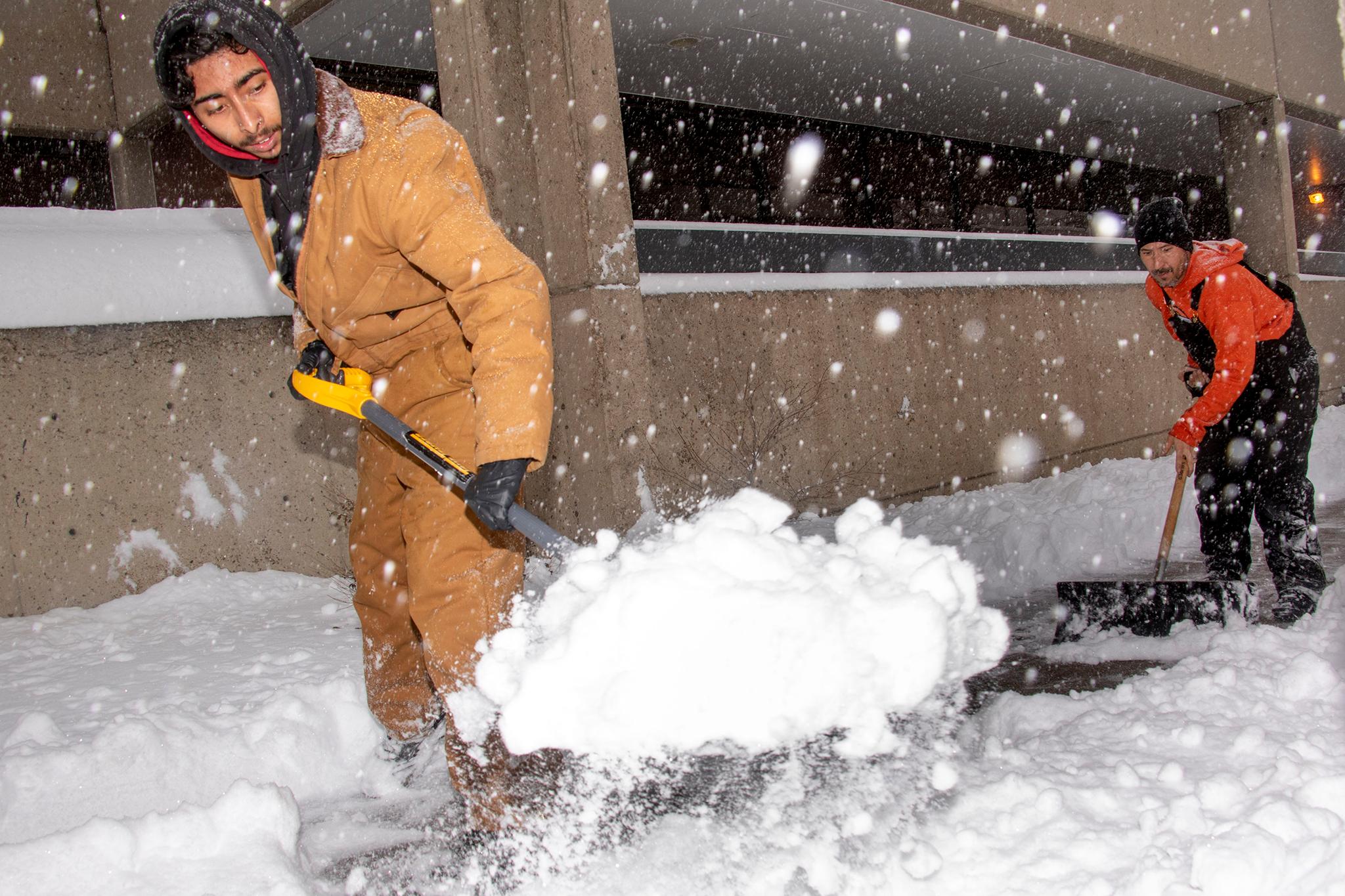
In many Colorado cities, residents have 24 hours after the snowfall ends to get it off of public sidewalks before risking a ticket. But while shoveling snow might seem like a simple enough chore, the last big study of shoveling injuries found that the task sent an average of 11,500 people to the emergency room every year in the U.S., with about 100 people each year actually dying from the activity.
That's not to mention the 3,300 injuries related to snowblowers in 2012, according to one study, including about 1,500 amputations. (DO NOT put your fingers in a clogged snowblower, you might not get all of them back).
But there is a safe way to move even the heaviest snow. Consumer Reports (among others) recommend the following:
First, don't procrastinate. Get out there before your neighbors' boots pulverize the snow into ice that freezes to the concrete. That just makes the odious job worse.
Second, have the right equipment. When moving more than four or five inches of snow, start with a pusher blade. You know the one - orange blade, broomstick handle, no walls on the side. As the name describes, it's good for moving snow, not picking it up. Use it to just get down to the surface.
Next, use a shovel with sides that can contain the snow to scrape the surface. Toss the remaining snow or ice off the pavement or sidewalk. A steel edge will help with scraping ice if you were late getting out there (see Tip #1), but that same edge can be a pain when working on an uneven sidewalk or trying to cross expansion joints.
Tip (that not everyone agrees with): Spray both sides of your shovel with cooking spray to help the snow slide off more easily. It just gets heavier if you aren't clearing it with every toss.
Health and safety advocacy publication EHS Today recommends keeping feet at about shoulder width and keeping the pusher or shovel close to the body when doing either pushing or shoveling. When actually picking up the snow, use your legs — not your back — and never twist or try to throw snow behind you or over your shoulders. Go forward.
Finally, take your time. Each shovel full of snow can weigh 30 pounds, so, if you aren't comfortable lifting that much, don't. Take smaller bites until it is gone.







